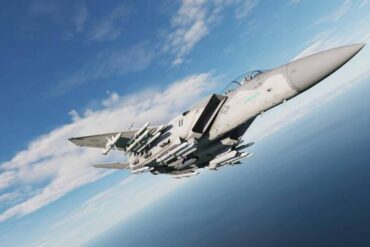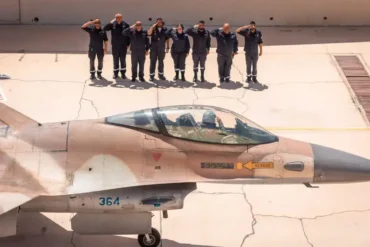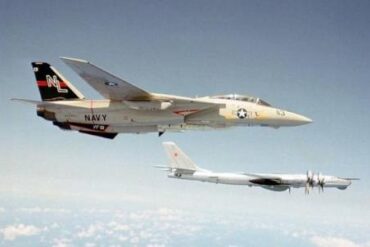The F/A-18 Hornet has been a cornerstone of naval aviation for decades, with multiple versions of this versatile aircraft serving as the backbone for several air forces and navies around the world. However, as with all military equipment, time inevitably catches up, and the F/A-18’s service life is nearing its end. This article will delve into the retirement schedule of the F/A-18 Hornet, focusing on its current status, future replacement plans, and the global impact of its retirement.
F/A-18 Retirement Timeline and Transition
End of Production: 2025 Marks the Final Chapter for the F/A-18E/F Super Hornet
The F/A-18E/F Super Hornet, an upgraded version of the classic Hornet, will officially end its production in 2025. The United States Navy had already placed orders that would ensure production continues until December 2025. While production is set to cease, the aircraft will remain in active service for several more years, continuing to serve as the Navy’s primary carrier-based multirole fighter.
However, the production line’s closure does not equate to the aircraft’s immediate retirement from service. The F/A-18E/F Super Hornet will remain operational for decades, with estimates indicating it could continue to serve well into the 2040s. Despite this, the fleet’s retirement timeline is closely linked to the delivery and operational readiness of its successor, the F-35C Lightning II.
Retirement of Earlier F/A-18 Models: A Gradual Phase-Out
Earlier models of the F/A-18, particularly the F/A-18C/D Hornet, have already begun to be phased out, with the last F/A-18C retiring in 2019. The gradual retirement of these older models has been an ongoing process, as the aircraft’s systems became increasingly outdated compared to modern fighters. The F/A-18E/F Super Hornet models, however, continue to be a cornerstone of the Navy’s capabilities, as they incorporate significant technological upgrades, including advanced avionics, enhanced radar, and greater payload capacity.

Projected Service Life: Extending the Super Hornet’s Role Until 2040s
The F/A-18E/F Block III Super Hornet is expected to remain in service until the 2040s, a critical extension of its lifespan driven by the need for a reliable carrier-based fighter. Originally, the aircraft was slated to be retired by 2046, but the F-35C’s delivery delays and ongoing technical challenges in achieving full operational capability for the next-generation fighter have prompted a reevaluation of timelines.
Despite its remarkable performance, the Super Hornet faces challenges in comparison to the upcoming F-35C Lightning II, which will eventually replace it. However, due to delays in the F-35C program and the high costs of procurement, the U.S. Navy will continue to rely on the Super Hornet for the foreseeable future. As a result, the retirement of the F/A-18E/F will likely extend beyond the original estimates, potentially into the late 2040s.
Global Perspectives on the F/A-18’s Retirement
The F/A-18 Hornet has seen widespread international use, serving the air forces and navies of many countries. The retirement plans for this aircraft, therefore, vary globally, with some nations phasing out the aircraft earlier than others and opting for newer replacements like the F-35.
Australia’s Transition from the F/A-18A/B Hornet to the F-35
Australia, a key operator of the F/A-18, made the decision to retire its fleet of F/A-18A/B Hornets in 2021, replacing them with the F-35A Lightning II. This transition aligns with the broader trend of replacing aging aircraft with more advanced, stealthy, and multi-role fighters capable of meeting the evolving demands of modern warfare.

Other International Users: Upgrades and Potential Transition to the F-35
Countries like Canada and Spain continue to operate various models of the F/A-18, and while some of these nations have begun planning for the eventual replacement of their fleets, others may choose to extend the service life of their Hornets through upgrades and modernization programs. The replacement of these aircraft could follow a similar pattern to that of Australia, with many nations considering the F-35 as the most viable successor.
For instance, Canada has already signed a deal for the procurement of F-35A Lightning IIs to replace its aging fleet of CF-18s (the Canadian variant of the F/A-18). Similarly, Spain is also considering a future transition to the F-35, though some F/A-18s may remain in service longer if upgrades are deemed cost-effective.
Technological and Operational Challenges in the Transition
Super Hornet’s Role in the Navy’s Future: Why It’s Still Relevant
The F/A-18E/F Super Hornet is expected to maintain its place in the U.S. Navy’s arsenal for a long time due to its outstanding versatility, performance, and ongoing upgrades. As of now, it remains one of the most capable multirole fighters, able to conduct a wide range of operations from air superiority and strike missions to electronic warfare and close air support. With Block III upgrades, which include improved avionics, enhanced radar, and upgraded engines, the Super Hornet remains a formidable asset for the Navy.
One key factor in the Super Hornet’s longevity is its ability to operate as a carrier-based fighter, which is a critical capability that the F-35C still struggles to fully demonstrate. The F-35’s operational limitations and high production costs have created a situation where the Navy is still heavily reliant on the Super Hornet to fulfill its mission requirements, particularly in the short term.

F-35C Delays: A Key Factor in the Super Hornet’s Extended Service Life
One of the primary reasons for the extended service life of the F/A-18E/F Super Hornet is the delay in the delivery and full operational capacity of the F-35C Lightning II. While the F-35 has been heralded as the future of naval aviation, technical and production delays have impacted the speed at which the aircraft can be integrated into the fleet. As the F-35C is still undergoing fine-tuning and proving itself in various operational environments, the Navy has had to adjust its timeline for replacing the Super Hornet.
The F-35C’s inability to fully meet the Navy’s needs at this time means that the F/A-18E/F will continue to serve as the primary carrier-based multirole fighter for years to come, ensuring its relevance in future naval operations.
Production and Cost Challenges: Impacting the Transition to the F-35
The F-35C program has faced significant production challenges and cost overruns, which have impacted the Navy’s ability to field enough aircraft to replace the F/A-18E/F Super Hornet at the required pace. The F-35C’s high cost has also limited the number of units the Navy can procure, with only 260 F-35C aircraft currently planned for purchase. This procurement shortfall means that a sizable gap will remain between the current fleet of Super Hornets and the number of F-35Cs required for a full fleet transition.
As a result, the Navy is left with no choice but to rely on its Super Hornet fleet for a more extended period, pushing back the original plans for F/A-18 retirement.
Conclusion: The Lasting Legacy of the F/A-18 Hornet
The F/A-18 Hornet series, particularly the F/A-18E/F Super Hornet, will continue to play a significant role in naval aviation well into the 2040s. Although the production of the Super Hornet is set to end in 2025, the retirement of this iconic aircraft will depend heavily on the successful integration of the F-35C Lightning II and the ongoing needs of various international air forces and navies.
As countries around the world continue to retire older models of the F/A-18, the transition to newer, more advanced fighter jets like the F-35 is inevitable. However, the enduring capabilities of the Super Hornet, combined with delays in the F-35 program and its high cost, will ensure that the F/A-18 remains in service for much longer than initially expected.
Ultimately, the F/A-18 Hornet has solidified its place in history as one of the most reliable and versatile naval aircraft ever built, leaving behind a legacy that will shape the future of naval aviation for decades to come.



